Language
- Deutsch
- English
- Español
- Français
- Italiano
- Nederlands
- Português
Currency
- AUD Australian Dollar
- CAD Canadian Dollar
- EUR Euro
- GBP Pound Sterling
- SGD Singapore Dollar
- USD US Dollar
- ZAR Rand

Location: The Masai Mara is located in southwestern Kenya.
Main airport: Jomo Kenyatta International Airport in Nairobi, with transfers to smaller airstrips in the Mara.
Best time to visit: July to October for the Great Migration; the Mara offers good wildlife viewing year-round.
Safari activities: Game drives, hot-air balloon safaris, cultural visits to Maasai villages.
Wildlife: The Big Five, cheetahs, and wildebeest during migration.
Accommodation: Luxury tented camps, lodges, and mobile camps.
‘Mara' means ‘spotted' in the Maa language, which is spoken by the area's ancestral residents, the Maasai people. It refers to how the Mara is dotted with acacia trees, indentations and craters when looked at from afar. Its wide open plains provide an oasis-like sanctuary for an abundance of wildlife like elephant, buffalo, zebra, giraffe, hyena, and the Mara's celebrated big cats: lion, leopard and cheetah. And, from about July to November every year, its savannah provides nourishment for wildebeest herds of epic proportions.
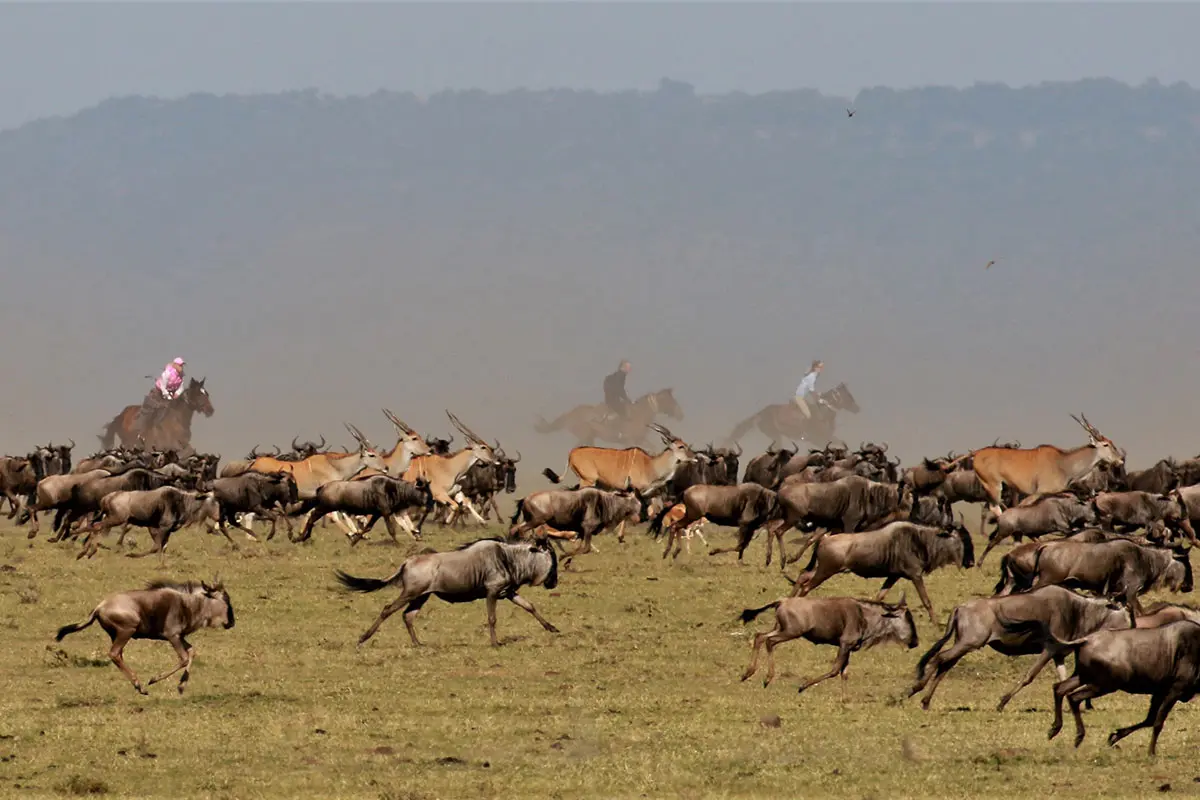
Thousands of visitors come to the Mara annually for some of the most authentic safari experiences in Africa. This blog will guide safari lovers through everything you need to know about the Masai Mara.
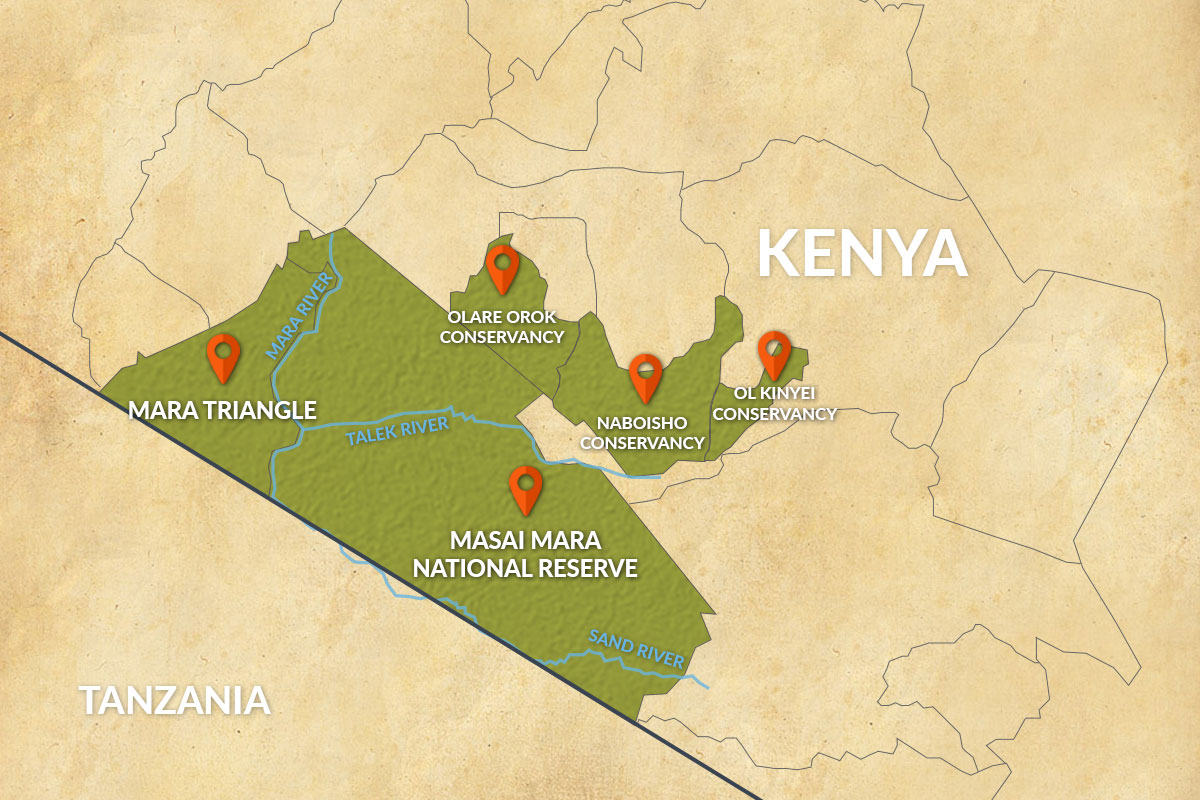
The Masai Mara National Reserve covers about 370 000 acres in south-western Kenya – an area slightly bigger than greater Los Angeles – and shares unfenced borders with a number of private conservancies, which are administered by the Maasai. It's the northern-most part of the Mara-Serengeti ecosystem, famous for the annual Wildebeest Migration. The landscape is dotted with thorn trees, kopjes and craters, and the reserve is drained by its major rivers: the Sand, Talek and Mara Rivers. The Mara's terrain is mostly open grassland with small seasonal rivers.
The Mara River provides the chief obstacle for the wildebeest herds to cross at about mid-year but smaller break-away groups also cross the Talek and Sand Rivers. Outlying stragglers have been known to cross the Talek as late as November!
Go2Africa works with safari partners in the national reserve and several conservancies. Visitors in the conservancies can venture into the reserve but those staying in the reserve cannot venture into the conservancies, making the conservancies a far more exclusive and private experience, especially during the height of the Migration. Some of the best accommodation is found in the Mara Triangle, Olare Orok, Naboisho and Ol Kinyei conservancies. Because they are tribal lands, you will pass the occasional Maasai manyatta or village and even large herds of beautiful and beloved Maasai cattle. The conservancies are great examples of where people, wildlife, conservation and domestic livestock have all found a place.
Kenya's capital and central transport hub is Nairobi, which is about 224 kilometres or 139 miles from the Mara's eastern-most border. Safari goers usually fly into Jomo Kenyatta International Airport, then catch connecting flights from the next-door Wilson Airport to the Mara's various airstrips. Sometimes you may drop other passengers at one airstrip before heading onto your own – almost like a ‘bus system' for the bush.
The classic Mara landscape is golden savannah: flat grasslands with plentiful grazing and the perfect terrain for cheetahs to chase down an unlucky Thomson's gazelle. But it also has small patches of riverine forest and clumps of trees – over the centuries, elephants have made short work of keeping much of the Mara clear of trees and forests, giving it its distinct openness.
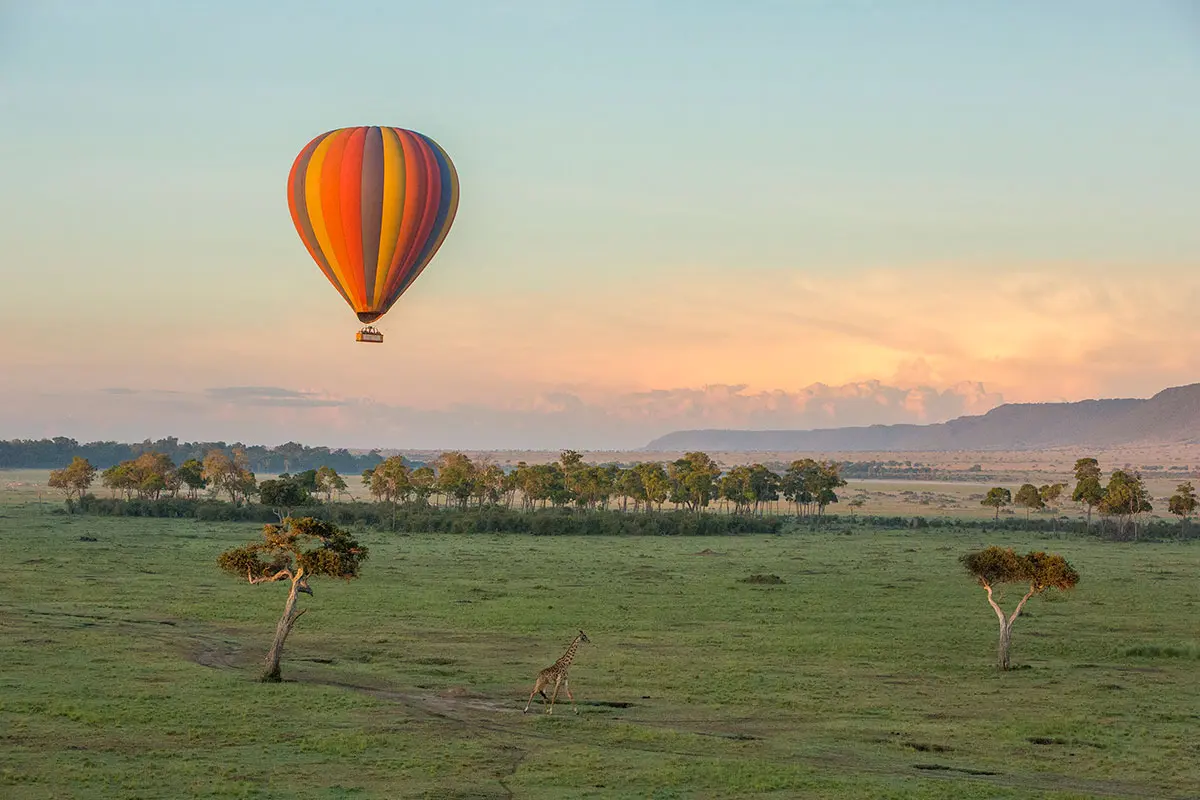
Serengeti National Park in Tanzania to the south, the Esoit (Siria) Escarpment to the west, and Maasai pastoral ranches to the north, east and west.
The Mara's distinctive acacia trees dot the south-east region, while the western border is the Esoit (Siria) Escarpment of the great East African Rift.
It's not easy to give exact costs for a Masai Mara safari. There are many budget-influencing factors like the time of year you travel, how luxurious you'd like your stay to be, whether you fly or drive between camps and lodges, whether or not you go private and exclusive, and which extra activities you want to add to your itinerary, like spa treatments, hot-air ballooning and cultural visits.
We can, however, provide approximate costs for a safari in the Masai Mara. The following estimates are based on a price-per-person-per-night, including accommodation and transfers:
| 4-star comfort | 4-star luxury | 5-star luxury | |||
|---|---|---|---|---|---|
| Low | High | Low | High | Low | High |
| $300 – $400 | $350 – $550 | $500 – $550 | $650 – $750 | $900 – $950 | $1000 – $1300 |
At Go2Africa we tailor-make safaris that match your budget and personal travel wishes. We do not offer cookie-cutter, one-size-fits-all packages and prefer to create bespoke journeys that make sense for your individual needs – thus no two Mara safaris will ever be the same.
Please remember that all these costs are guidelines only. Feel free to connect with one of our Africa Safari Experts to help you plan a Masai Mara safari itinerary that perfectly suits your budget and specific travel wishes. Our agents can help you get the most safari bang for your buck.
Choosing which area in the Masai Mara to visit will influence your safari experience. The national reserve is busiest during the Wildebeest Migration (from about July to November) and most of the area's camps and lodges cater for large numbers of guests. The concessions to the north offer more privacy at luxury tented camps and special activities like walking safaris. The Mara's eastern region is nearest to Nairobi and the accommodation is more geared towards scheduled tour groups.
Accommodation in the Mara can range from no-fuss mobile camps that move with the Wildebeest Migration to old-style tented camps and very luxurious family-friendly lodges. Here are some of our favourite options:
The Masai Mara is one of Africa's top wildlife destinations and Kenya's flagship conservation area. It offers excellent year-round game viewing thanks to its diverse population of game like elephant, buffalo, zebra, giraffe, hyena, eland, gazelle, and the Mara's famous big cats.
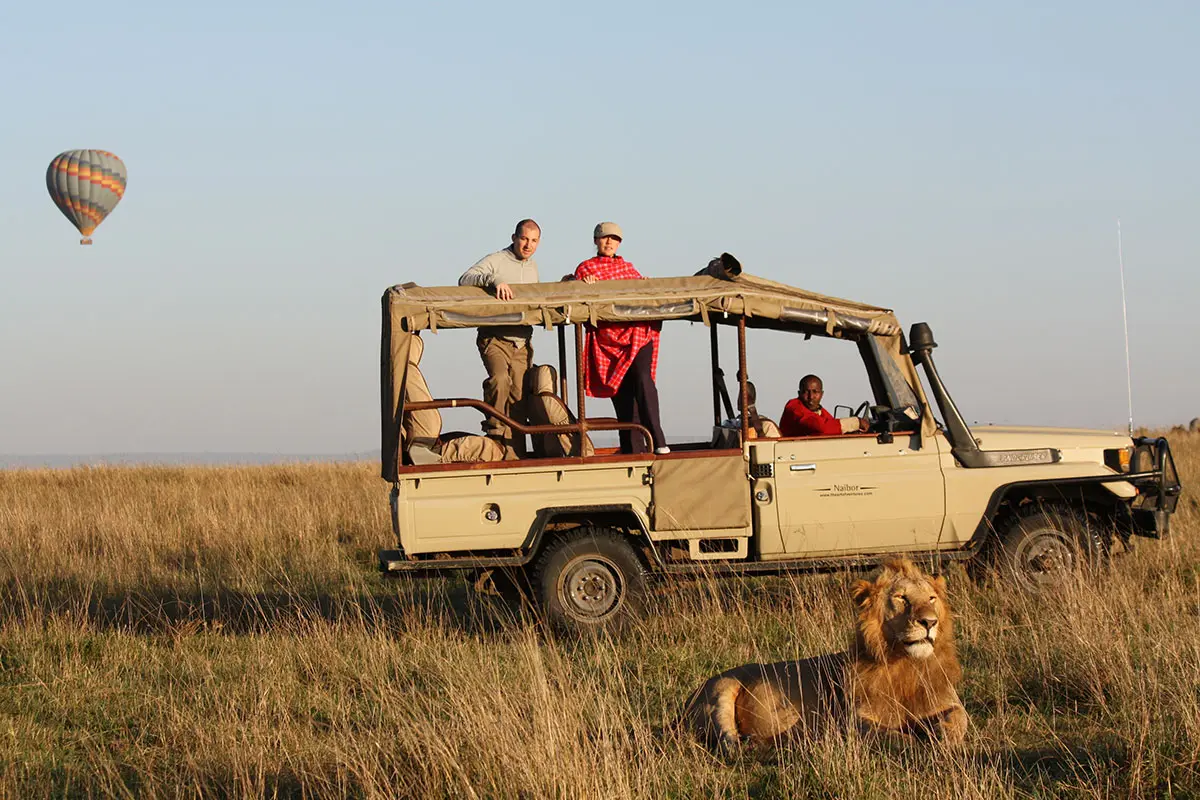
The Mara-Serengeti ecosystem is the theatre in which one of the greatest shows on Earth is staged every year. From about July, two million wildebeest traverse the Mara River into the Masai Mara National Reserve to feast on fresh and succulent savannah. The herds hang out in the Mara until they've devoured its grasslands (around November), and then cross back into the Serengeti to continue mowing East Africa's mega-lawns.
Keep the following in mind if you want to see the Wildebeest Migration:
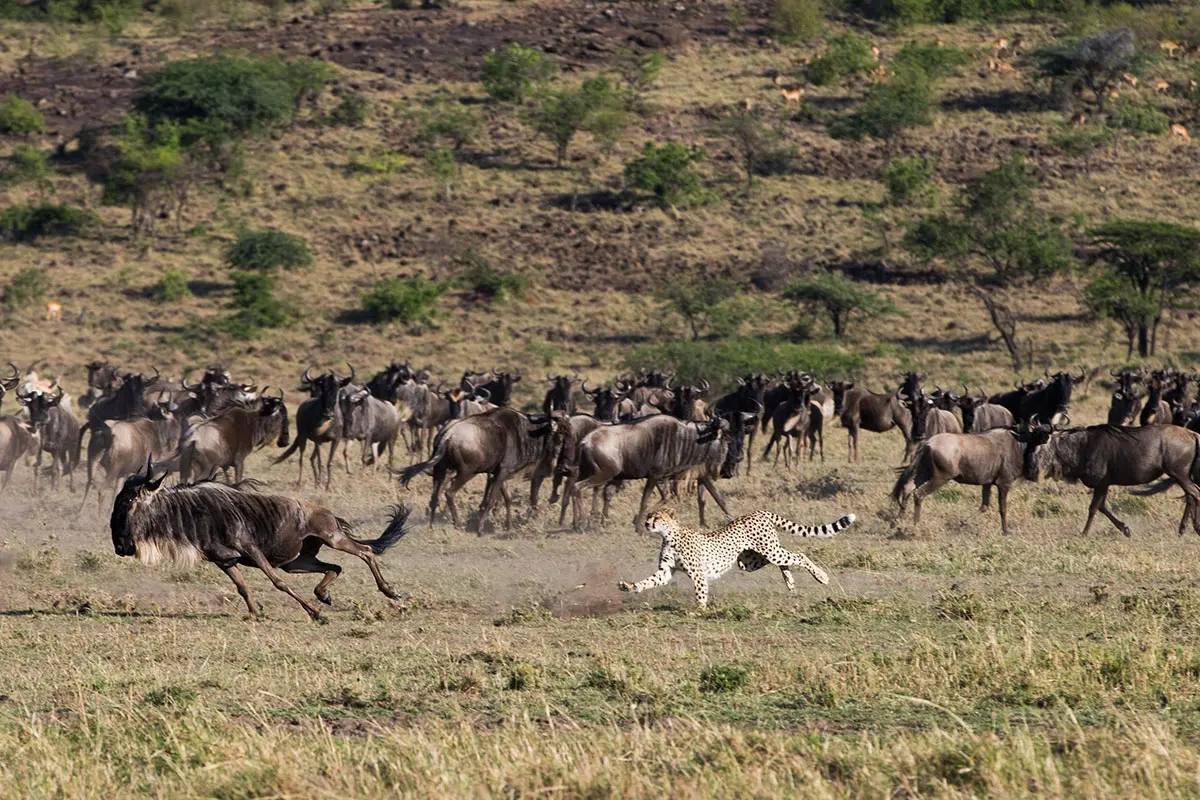
Although some rhino still live in the Masai Mara, they are actually quite difficult to find. It's much easier to spot the Big 5's other distinguished members: lion, leopard, elephant and buffalo.
A bonus of the Mara's flat, wide and open plains is that cheetah are perfectly adapted to it and this a great place to see them. Although not part of the Big 5 crew, it's always a highlight to watch these lightning-quick and nimble big cats chase down their prey in the Masai Mara.
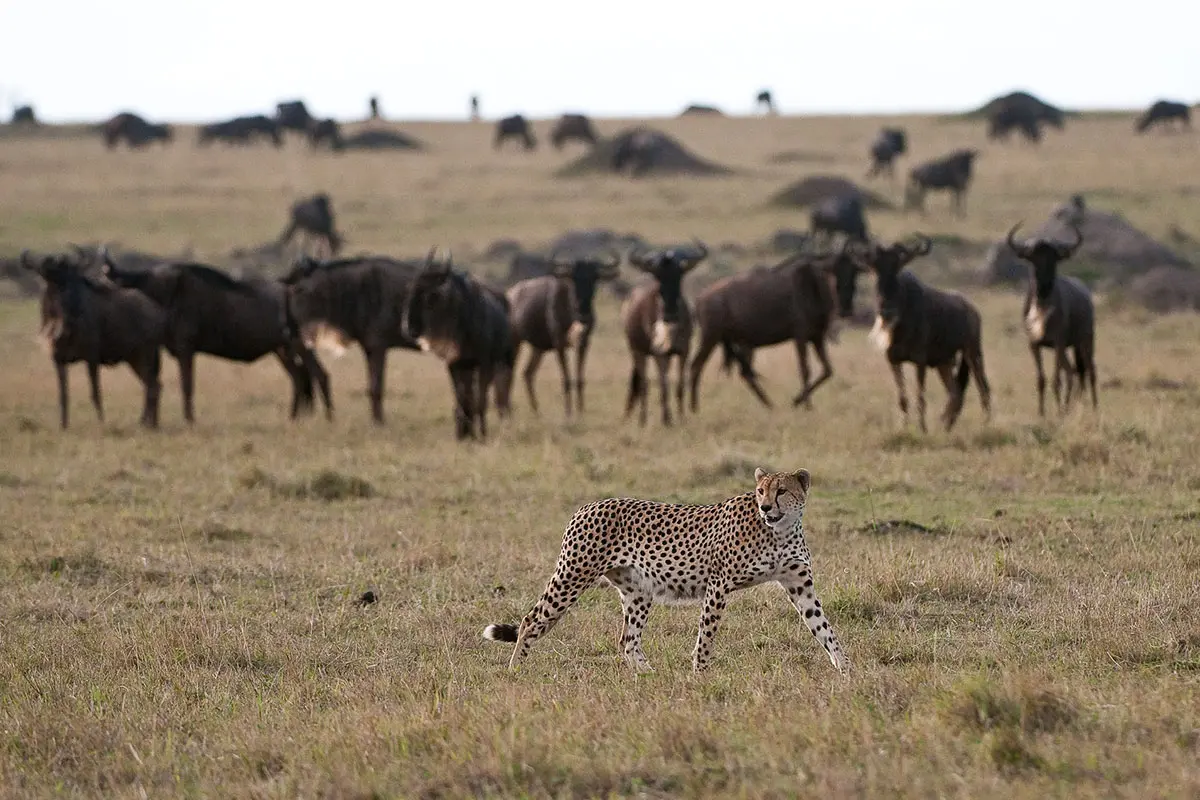
There is no real ‘best time' to go to the Masai Mara for general game viewing, thanks to its abundant wildlife and mild climate. It is renowned as a year-round safari destination because there's almost always something to see on the Mara's wide and open plains. The only time when it's not ideal to travel is during Kenya's ‘long rains' (about April to June). Some safari lodges and camps are closed during this time.
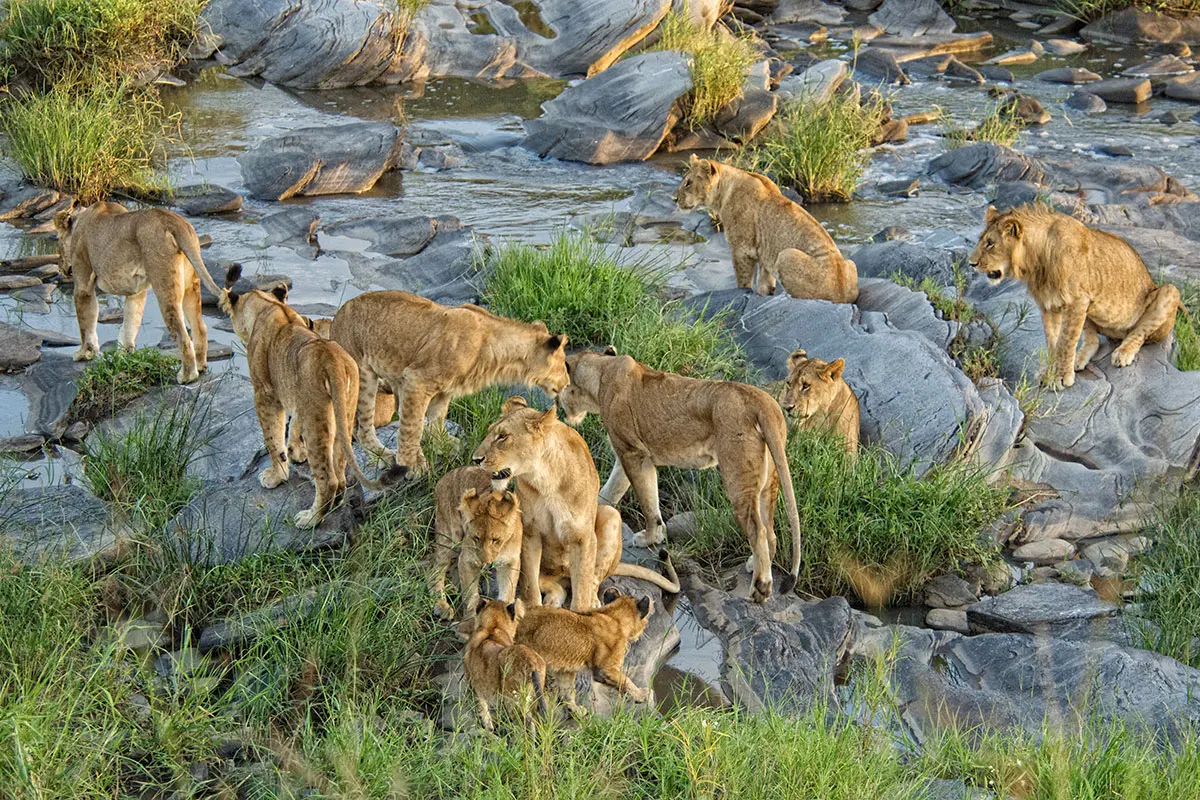
Deciding when to go to the Mara depends on a few factors – like your personal schedule, budget, and what you want to see and experience…
| PEAK SEASON | LOW/GREEN SEASON | ||||
|---|---|---|---|---|---|
| WHEN | July to October | December to April | |||
| SEASON | Autumn (fall) and winter | Spring and summer | |||
| WEATHER | Cool with no rain | Hot with afternoon thunder showers | |||
| WILDEBEEST MIGRATION | Yes | No | |||
| LANDSCAPE | Dry and dusty | Lush and green, with excellent light for photography | |||
| GAME-VIEWING HIGHLIGHTS | Wildebeest Migration | Babies and migrant birds | |||
| RATES | High | Low |
Alternatively, travelling to the Masai Mara in the ‘shoulder seasons' (about November and May-June) means that you'll enjoy mild temperatures and excellent general game viewing. The seasons are changing so the weather will be ‘a little bit of everything'.
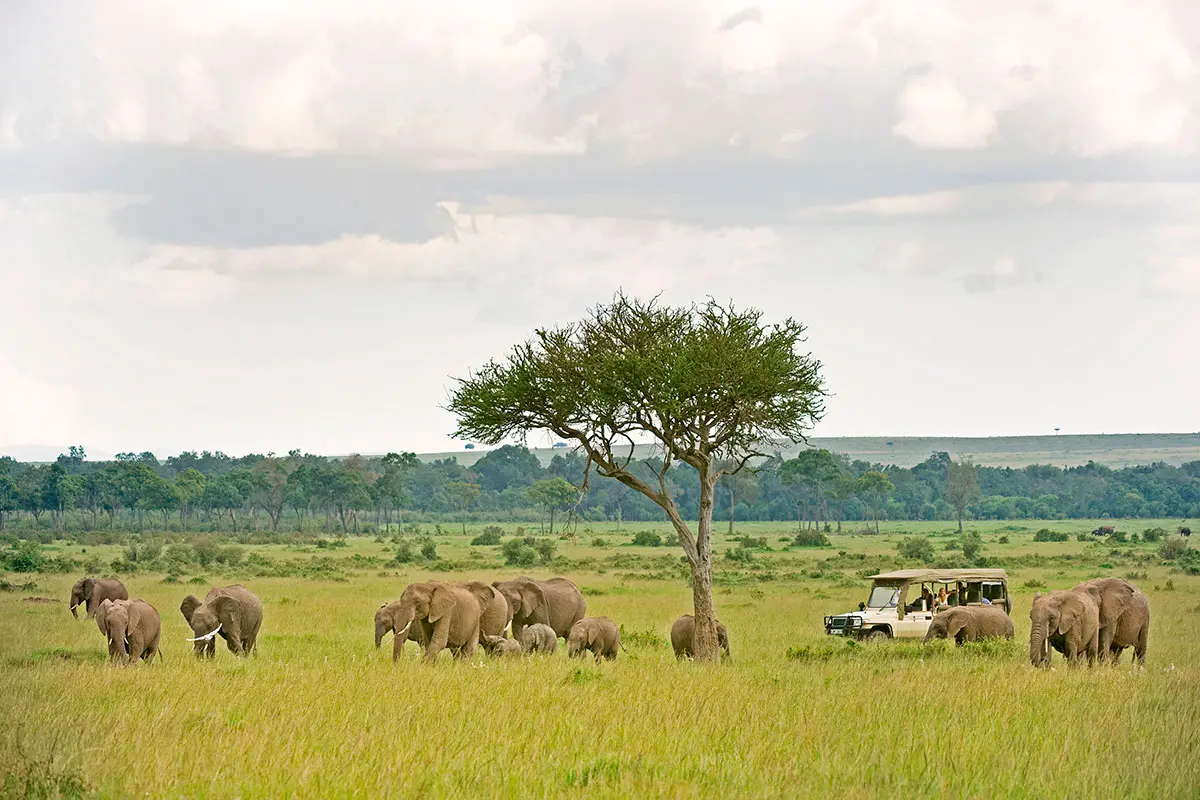
Mara tours are often ‘fly-in' itineraries to maximise your time on safari. The Masai Mara is not recommended as a self-drive destination.
Most travellers fly into Nairobi's major international airport, Jomo Kenyatta International, and catch a short-haul flight from nearby Wilson Airport to the Mara's various airstrips. From there you'll be transferred to your camp or lodge by 4×4. The more affordable option is a road transfer from Nairobi but keep in mind that it's a 270 kilometre or 168 mile-journey to the Masai Mara Reserve's nearest gate – this can take between four and five hours.
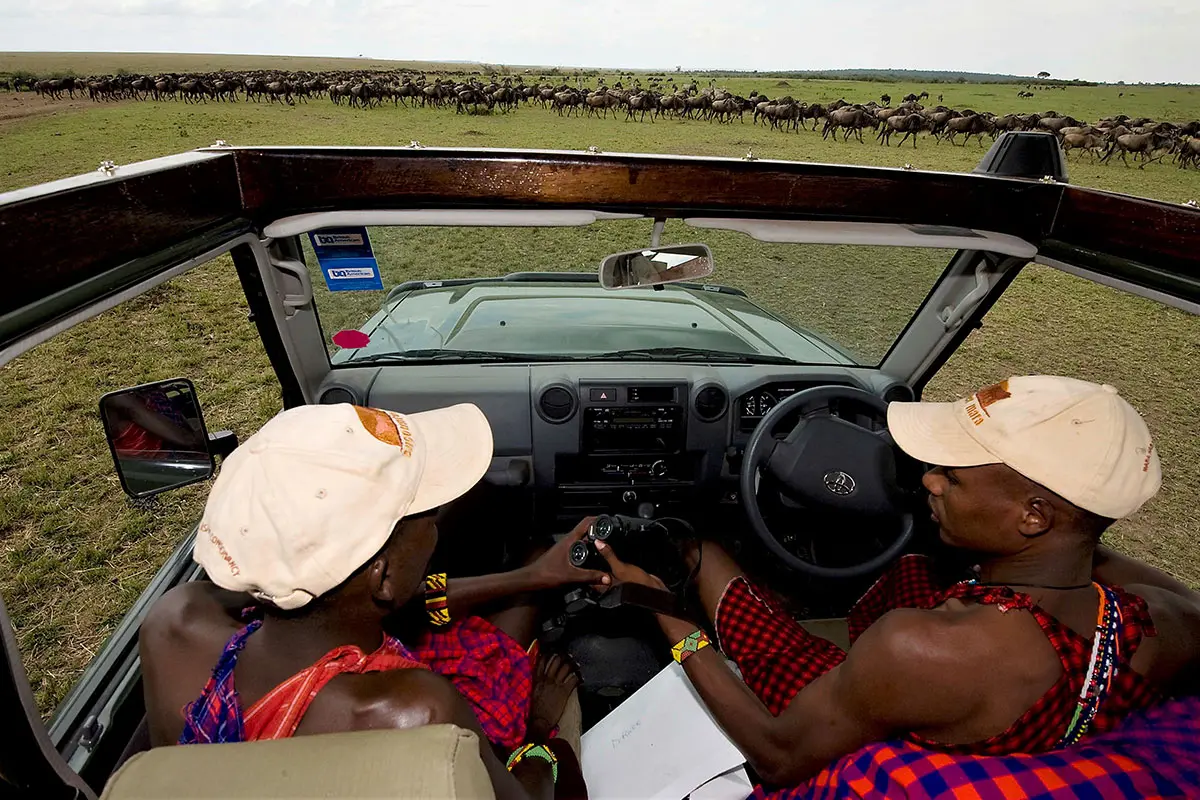
The Mara is a rewarding safari destination which offers many unique experiences, depending on your travel style…
| TRAVELLER TYPE | RECOMMENDATIONS | HIGHLIGHTS | |||
|---|---|---|---|---|---|
| First-time safari goers | Nairobi-Amboseli-Masai-Mara round-trip |
|
|||
| Photographers and birdwatchers | Low / Green Season |
|
|||
| Honeymooners | Exclusive settings in private concessions Combines well with a beach destination |
|
|||
| Families | Travelling with children over 8 years, teenagers and grandparents |
|
|||
| Solo | Tailor-made tours to maximise budget. |
|
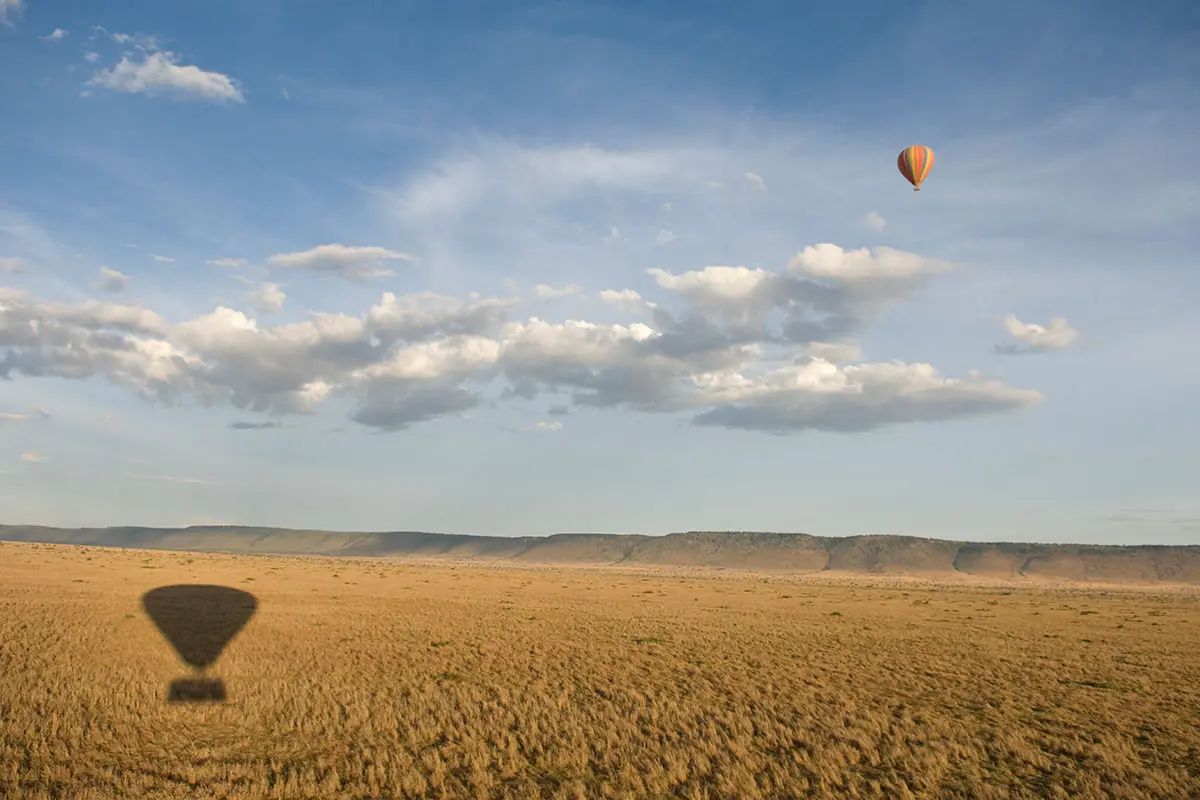
The Mara is the ideal destination for first-time safari goers and visitors to Africa because:
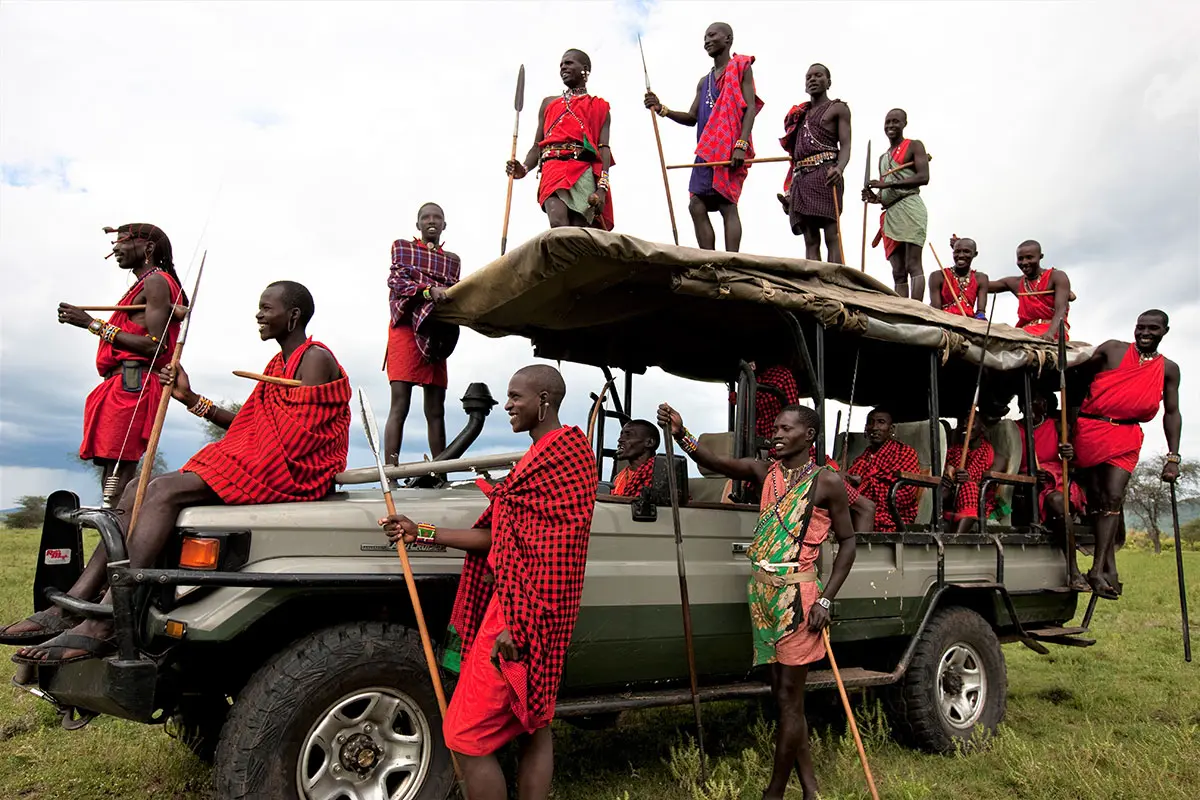
Whether you're travelling solo, with your family, or celebrating your marriage with a romantic safari honeymoon or anniversary vacation, we recommend chatting to one of our Africa Safari Experts. Get in touch to tailor-make your safari itinerary and accommodation to your wishes and interests.
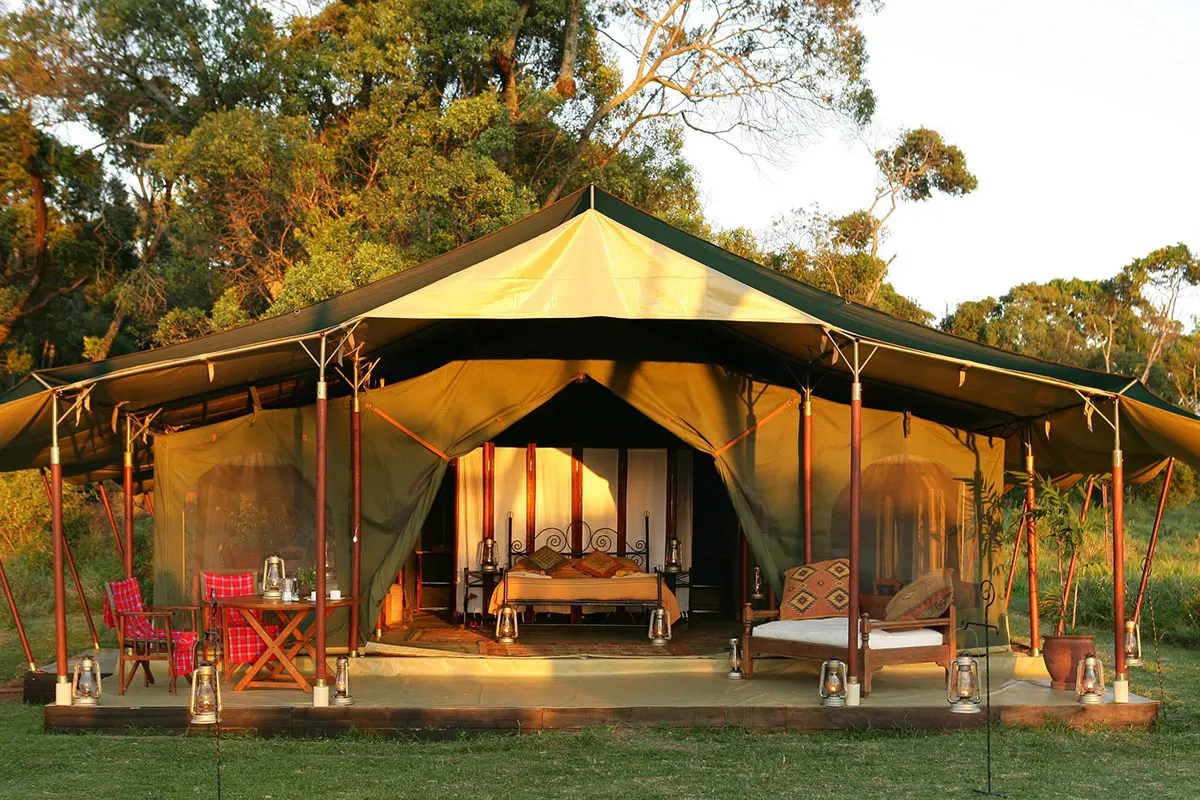
Kenya is a safe destination to visit and thousands of travellers go on safari in this country every month. We've been tailor-making Masai Mara safaris for our clients since 1998 – here are our top tips when it comes to health and safety:
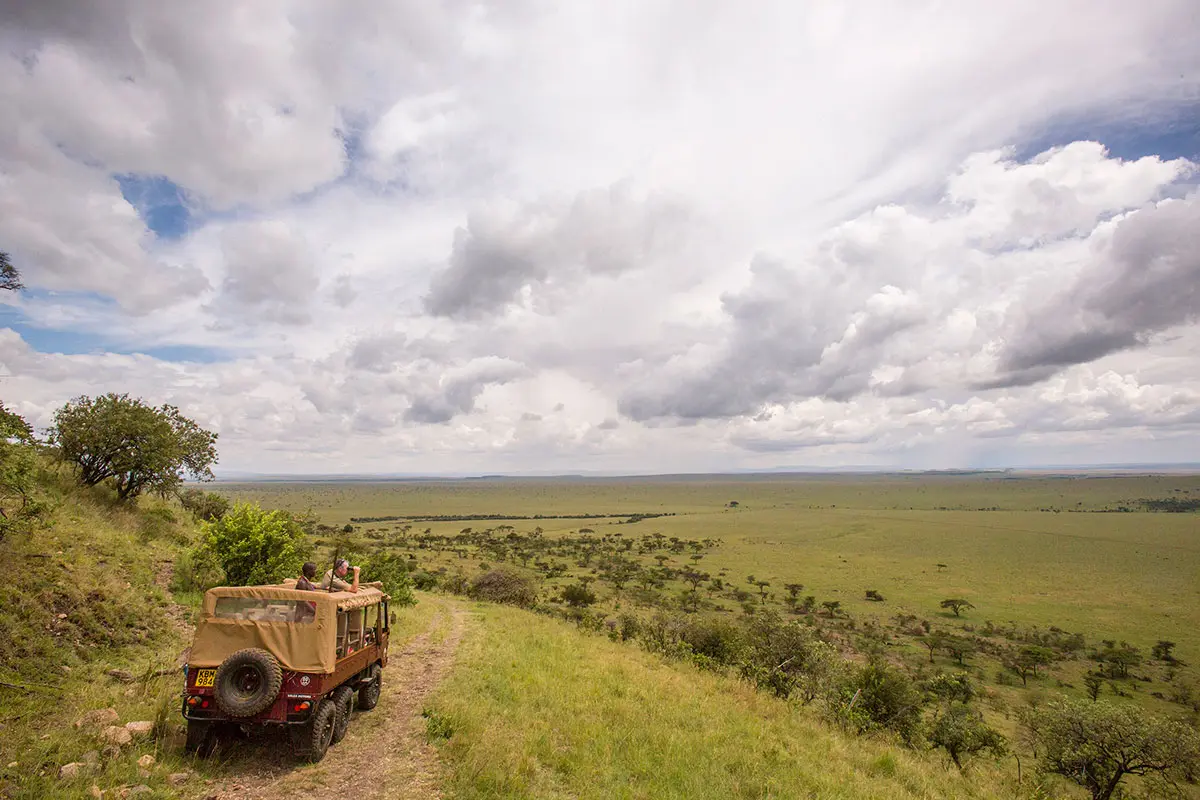
| DESTINATION | WHY VISIT | ||
|---|---|---|---|
| Amboseli National Park | • The best views of Mount Kilimanjaro • Great big game viewing, especially elephants |
||
| Laikipia and Lewa | • Off the beaten path – great for seasoned safari goers • See rare northern white rhino and black rhino • Go on camelback safaris |
||
| Samburu National Reserve | • Great game viewing, especially leopard and wild dog • Fascinating cultural interactions • See the ‘Samburu Special 5': Grevy's zebra, gerenuk, reticulated giraffe, beisa oryx and Somali ostrich |
||
| Lake Nakuru | • See Kenya's famous flocks of flamingos • Over 400 recorded bird species |
||
| Diani beach | • Popular family resorts • Exclusive beach lodges |
||
| Lamu Archipelago | • Reef scuba diving and snorkelling • Barefoot luxury experience – ideal for a honeymoon |
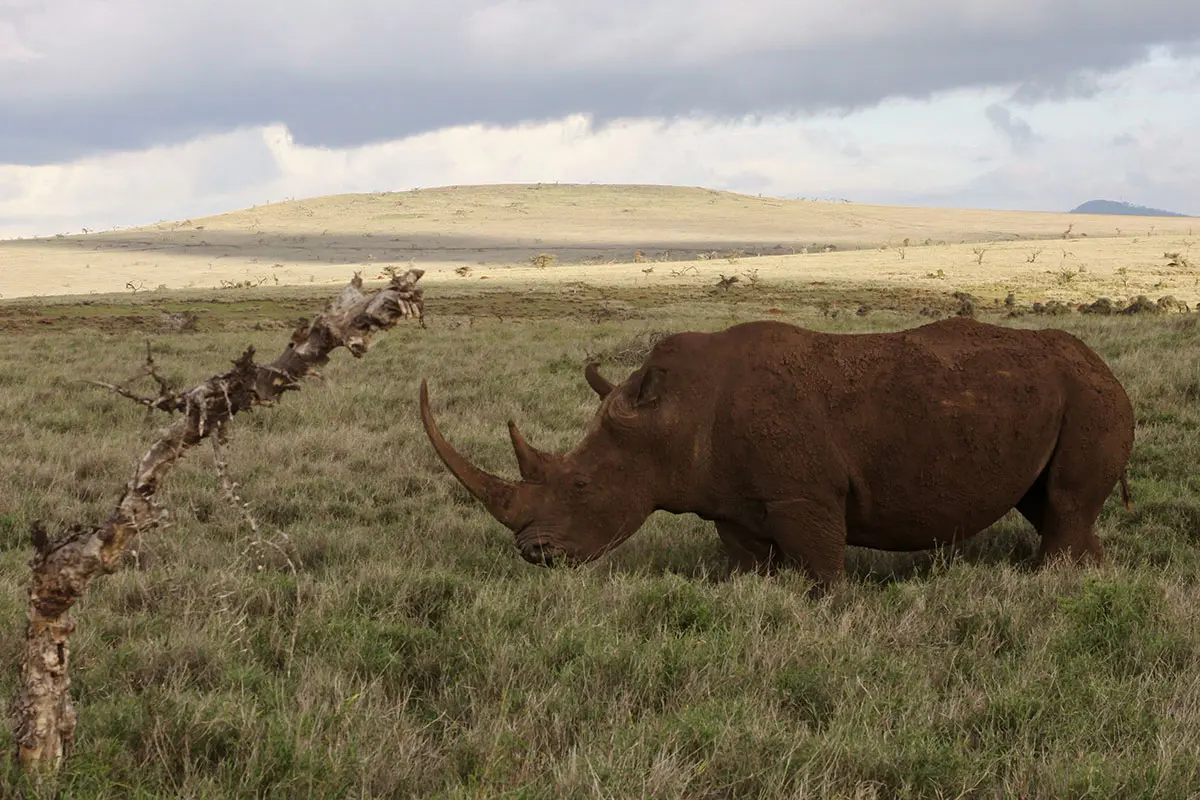
Because Nairobi is a major transport hub for East Africa, it's very easy to get to other sensational destinations…
| COUNTRY | WHY VISIT | ||
|---|---|---|---|
| Tanzania | • See the Wildebeest Migration in the Serengeti • Superb Big 5 viewing in Ngorongoro Crater • Idyllic beach holiday in Zanzibar |
||
| Zambia | • See Victoria Falls • Fantastic walking safaris • Boat cruises on the Zambezi River |
||
| Zimbabwe | • See Victoria Falls • A classic safari experience in sensational parks |
||
| Uganda | • Unforgettable gorilla trekking in Bwindi | ||
| Malawi | • Outstanding snorkelling in Lake Malawi | ||
| South Africa | • Visit Cape Town • Travel the gorgeous Garden Route • Experience the renowned Kruger National Park |
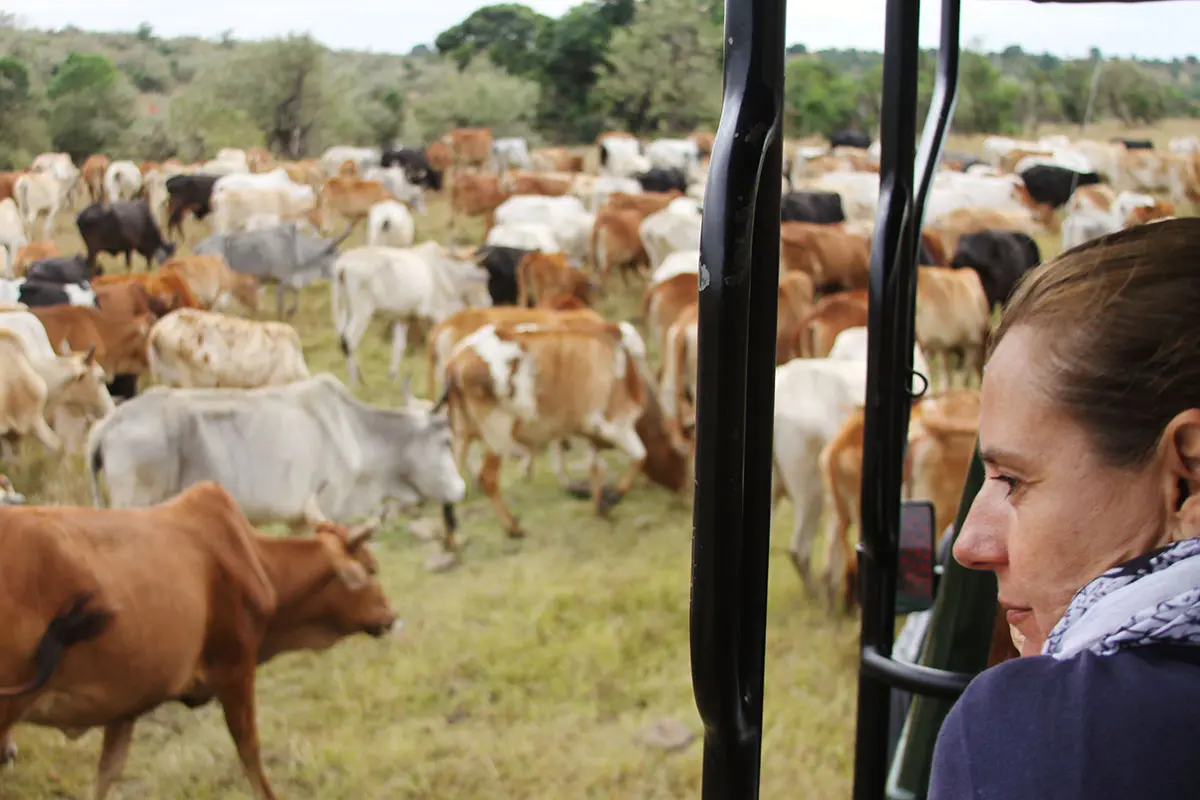
When planning your visit, there are several things to do in the Masai Mara that will ensure a truly unforgettable experience.
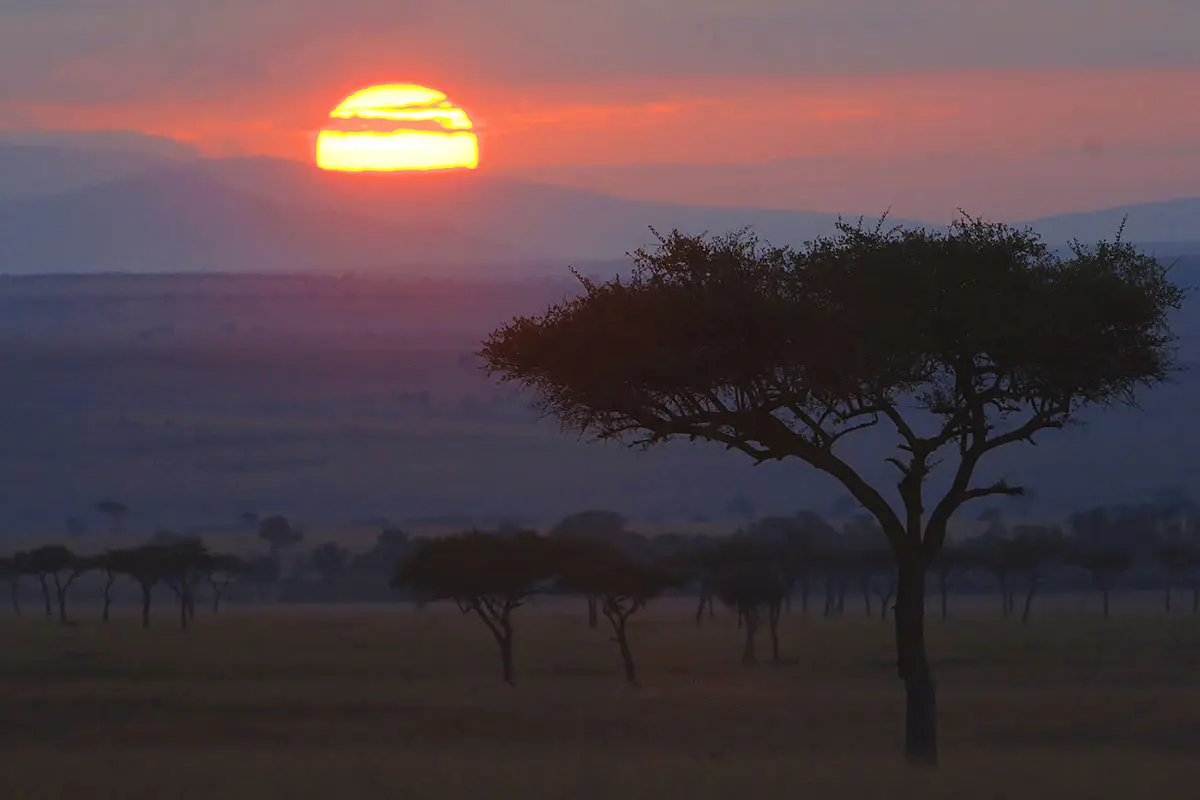
So now that you know all there is to know about the Mara, why not co-create a tailor-made Masai Mara safari with us? Get in touch with an Africa Safari Expert today.